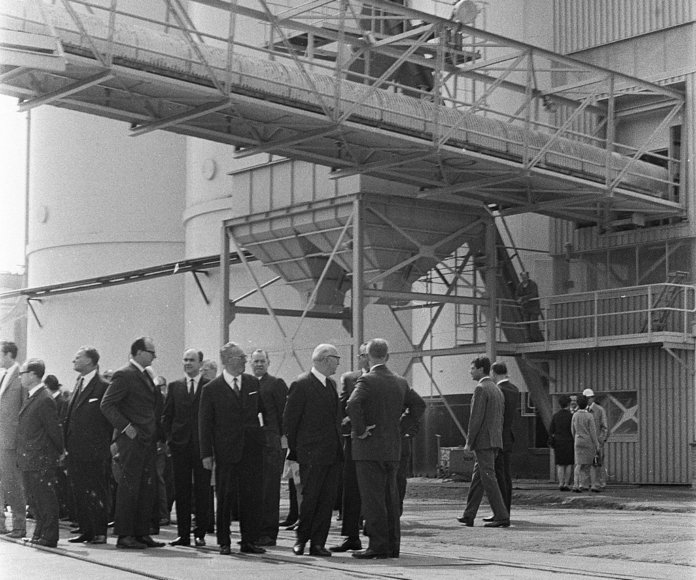
Cargill may not be the most recognizable brand name for most people, but rest assured, nearly every household in America and many across the world are utilizing their wares in one way, shape or form. The company has expanded from what was once a commodity transport business into the largest private and family-owned company in America today. A list everything that Cargill makes could fill this article alone, but some of their more major offerings include feed, seed, fertilizer, food ingredients like corn syrup and flour, brand name products including meat and poultry, as well as industrial products like steel and salt. It also runs a financial arm, managing financial risks in the commodity market. And yet, despite this sprawling empire, Cargill is still largely out of the public eye.
Part of this unseen yet massive reach is by design. The corporate philosophy at Cargill emphasizes not only secrecy but an entire worldwide network dedicated to covert intelligence. This may seem a bit odd, but Robert Bergland, the former Secretary of Agriculture, told the Minneapolis Star and Tribune that Cargill probably has “the best crop-marketing intelligence available anywhere, and that includes the CIA.” This secrecy has been a double-edged sword for Cargill, but to show how that philosophy has shaped its rise and success, we must start at the beginning.
The Origins of Cargill
Founder William Wallace Cargill started his career in grain at the close of the American Civil War in Conover, Iowa. The focus on family started right from the beginning, with William forming several different partnerships with brothers Samuel and James. As the increase in grain transport channels such as railroads helped the business to expand further west, Cargill and his partners got involved in several other ventures. These included insurance, flour milling, coal, farming, real estate, lumber, and railroads.
In 1895, Cargill’s daughter would marry John Hugh MacMillan, and later his son William S. Cargill also married a MacMillan. This family link would set the stage for a family feud that sparked with the death of the elder Cargill in 1909. John Hugh MacMillan would end up forcing out William S. Cargill from the company, to the point that in the modern day, the MacMillan family retains firm control of the company, though some Cargills do hold stock.
It was John Hugh MacMillan’s cautious approach to business would set the stage for much of the modern Cargill culture. It was he who negotiated with the banks and convinced them to extend them credit, a necessity for the massive deals that became a standby of Cargill’s operations. The reputation that it developed with banks would be the beginning of Cargill’s “our word is our bond” philosophy, something that has been held dear to the company’s operations and become an essential trait in the years to come.
Falling on Hard Times
In 1936, John MacMillan, Jr. became president of Cargill. During the Great Depression, he invested heavily in the transportation of grain, including designing new barges with twice the capacity at half the cost. Some of Cargill’s other innovations included the teletype wire system, a new style of grain terminal first and the establishment of a grain laboratory. However, this aggressive approach would prove problematic for Cargill, first through a prolonged legal battle with the Chicago Board of Trade, and second through the advent of World War II, which crippled its foreign markets that made up 60% of business.
This would mark the beginning of a diversification initiative that some would say never really stopped. MacMillan began looking into feed, soybean processing, seed and vegetable oil after the war, and by the 1950’s, Cargill was able not only to rebuild but also grow its foreign presence through its Swiss subsidiary, Tradax, which allowed it to sell grain in Europe.
Reinvention and Innovation
Whitney MacMillan, the grandson of William Wallace Cargill, would take over in 1976. Under his leadership, Cargill would become even more diverse, with new operations in beef, pork and poultry processing, steel making, citrus processing, petroleum trading and merchandising, international metals, origination, and trading and fertilizer production. Not all of these were successes, but it was clear that Cargill had come into its own to become a true international giant.
At the end of the century, changes in the food industry meant that focusing on merchandising commodities was no longer a viable choice for a company of this size. The company answered by “moving up the food chain” by processing commodities. For instance, instead of simply trading corn, Cargill began developing a line of renewable products made from corn, helping it hedge against wild swings in price of the notoriously fickle foods industry.
Today, Cargill has made an art out of its tradition of diversification and innovation to become the single largest privately held company in the United States in terms of revenue. For a company that supplies 22% of the US domestic meat market and provides all of the eggs used in McDonald’s restaurants, its steadfast dedication to reinvesting earnings and long-term strategic planning is a testament of the strength that it draws from its rich family history.









